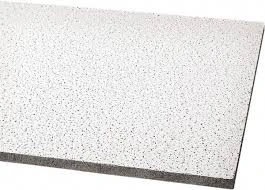- Afrikaans
- Albanian
- Amharic
- Arabic
- Armenian
- Azerbaijani
- Basque
- Belarusian
- Bengali
- Bosnian
- Bulgarian
- Catalan
- Cebuano
- Corsican
- Croatian
- Czech
- Danish
- Dutch
- English
- Esperanto
- Estonian
- French
- German
- Greek
- Hindi
- Indonesian
- irish
- Italian
- Japanese
- Korean
- Lao
- Malay
- Myanmar
- Norwegian
- Norwegian
- Polish
- Portuguese
- Romanian
- Russian
- Serbian
- Spanish
- Swedish
- Thai
- Turkish
- Ukrainian
- Uzbek
- Vietnamese
ডিসে. . 02, 2024 04:58 Back to list
Ceiling T-Bar Framework for Efficient Space Design and Acoustical Performance
The Ceiling T-Bar System An Overview
In modern construction and interior design, the ceiling T-bar system has emerged as a favored choice for a variety of architectural applications. This innovative ceiling system not only enhances aesthetics but also provides functional benefits that make it a lucrative option for both residential and commercial environments. This article will explore the components, advantages, installation process, and potential applications of the ceiling T-bar system.
What is a Ceiling T-Bar System?
The ceiling T-bar system, also known as a suspended ceiling grid system, consists of a framework of metal or sometimes wood bars arranged in a grid pattern. These bars form T shapes, which then support lightweight ceiling tiles or panels. The design allows for easy access to the space above the ceiling, making it ideal for buildings that require frequent maintenance of plumbing, electrical systems, and HVAC.
Components of the T-Bar System
The primary components of a ceiling T-bar system include
1. Main Runners These long, horizontal bars form the backbone of the ceiling grid. They are usually installed at standard intervals, typically 4 feet apart, and serve as the primary support for the ceiling tiles.
2. Cross Ties or Cross Tees These shorter bars are installed perpendicular to the main runners, creating a grid configuration. The cross tees connect with the main runners to form a stable framework for the ceiling tiles.
3. Ceiling Tiles Available in various materials, sizes, and finishes, ceiling tiles are inserted into the grid. Options range from acoustic panels that reduce noise to decorative tiles that enhance visual appeal.
4. Hangers and Support Systems These are essential for securing the T-bar system to the structural ceiling above. Proper installation ensures the grid can support the weight of the tiles and any additional fixtures.
Advantages of the Ceiling T-Bar System
1. Flexibility The T-bar system allows easy modification of the layout for changes in design or utility access. It can accommodate various types of ceilings and is suitable for irregular spaces.
2. Accessibility One of the most significant benefits of a suspended ceiling is the access it provides to utilities. Maintenance personnel can quickly remove tiles to reach wiring, ductwork, or plumbing without significant disruption or damage.
ceiling t bar system

3. Aesthetic Appeal A ceiling T-bar system can greatly enhance the visual aesthetics of a space. With numerous styles, textures, and colors of ceiling tiles available, it's easy to achieve a tailored look that complements any interior design.
4. Acoustic Performance Many ceiling tiles come with acoustic properties designed to improve sound quality within a room. This is particularly beneficial in spaces like offices, schools, and theaters, where noise reduction is essential.
5. Cost-Effective Compared to traditional drywall ceilings, T-bar systems can be more economical in terms of material and labor costs. Installation is generally quicker, and maintenance can also save money over time.
Installation Process
Installing a ceiling T-bar system involves careful planning and execution. Here are the basic steps
1. Planning and Measurement Before installation, it's crucial to measure the area accurately and map out the grid design. Consider factors like lighting fixtures and HVAC vents.
2. Installation of Main Runners Main runners are installed first, usually at intervals of 4 feet. They are suspended from the structural ceiling with hangers.
3. Adding Cross Tees Once the main runners are in place, cross tees are inserted to complete the grid pattern.
4. Inserting Ceiling Tiles Finally, ceiling tiles are inserted into the grid. Depending on the design, additional elements like lighting fixtures may also be mounted during this phase.
Applications
The ceiling T-bar system can be found in a wide range of settings, from retail stores and restaurants to offices and educational institutions. Its versatility makes it suitable for almost any commercial or residential space.
In conclusion, the ceiling T-bar system is a practical and aesthetic solution for modern interiors. With its ease of installation, accessibility, and array of design options, it continues to be a popular choice in construction and design industries. Whether you are designing a new space or renovating an existing one, considering a T-bar ceiling system could elevate the functionality and appearance of your environment.
-
Transform Interiors with PVC Gypsum Ceiling: A Stylish, Durable, and Moisture-Resistant SolutionNewsMay.19,2025
-
The Smart Interior Upgrade: Discover the Durability and Versatility of Gypsum Ceiling Access Panel SolutionsNewsMay.19,2025
-
The Smart Choice for Interior Design: Discover the Value of PVC Gypsum Ceiling SolutionsNewsMay.19,2025
-
Mineral Fiber Ceiling Tiles: The Smart Blend of Performance and AestheticsNewsMay.19,2025
-
Mineral Fiber Ceiling Tiles: The Superior Choice Over Gypsum for Sound and Fire SafetyNewsMay.19,2025
-
Mineral Fiber Ceiling Tiles: Eco-Friendly Strength and Style for Every CeilingNewsMay.19,2025







